Temple Incense
Immerse your Senses in the Scented Luxuries of Ancient Egypt!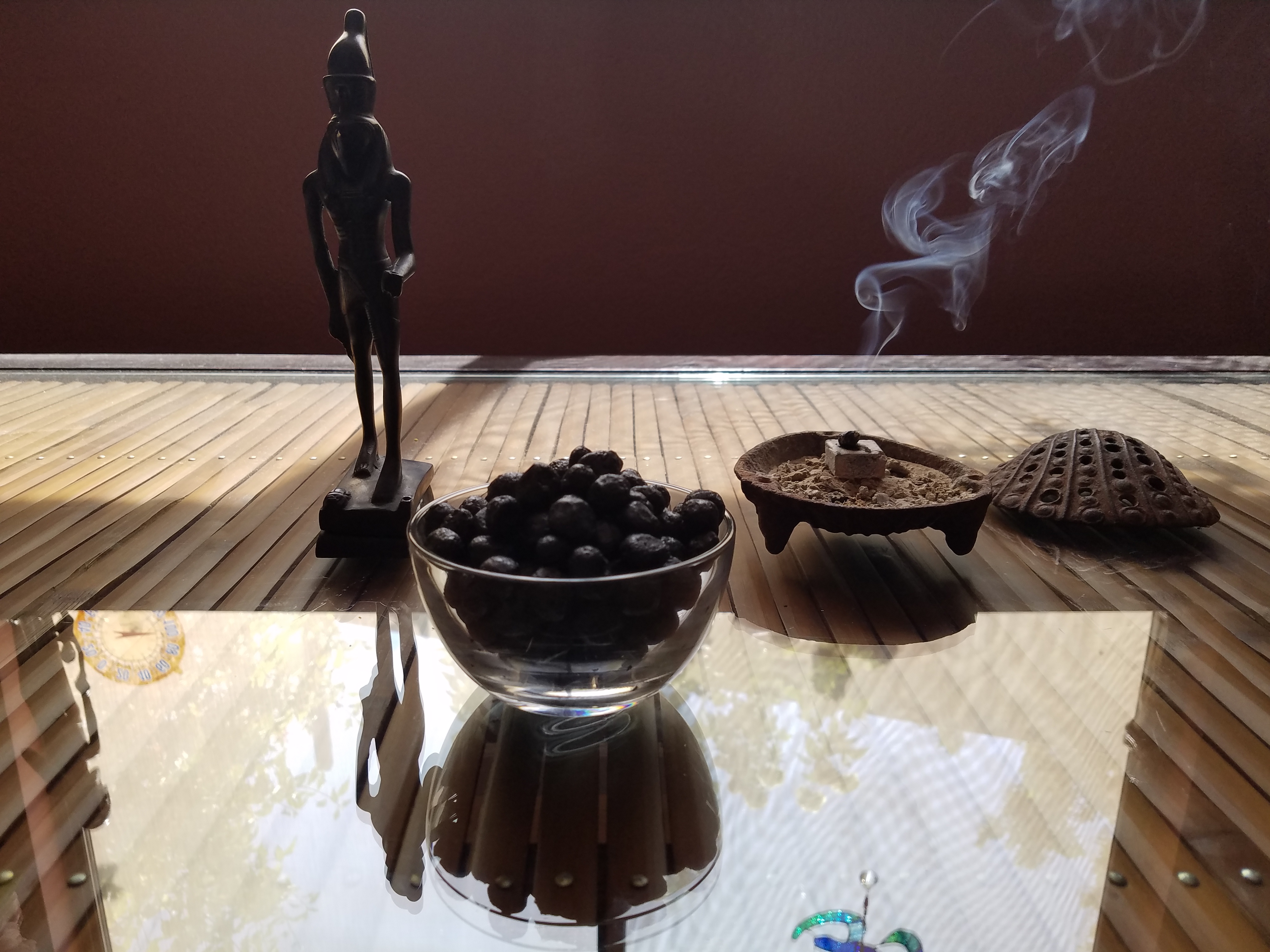
𓅊
Kem Kepu - Black Kyphi - Temple Incense
Often called the “Eye of Horus” by the ancient Egyptians, Kepu (offering to masculine gods) or Kapet (offering to feminine gods), was called Kyphi by the Greeks. It was the most revered of the three ancient Egyptian temple incenses besides Frankincense and Myrrh. With the fall of Egypt, the sacred recipe was lost for nearly 2,000 years. Wandering Stars has brought Kepu /Kapet back to life again.
The ancient Egyptians called their country Kemet, which means “the black land” because of the color of the organic alluvial deposits from the Nile after it flooded it’s banks every year. This was the key to the Egyptian empire’s health and wealth with it’s abundant food production from the nutrient rich black earth. Thus, and also due to it’s dark black color - Kem, we call our Temple incense reproduction Kem Kepu.
Kepu /Kapet was formulated with 16 different ingredients primarily for Temple use, when the doors to the sanctuary of the gods were opened in the morning or closed for the night. It has a distinctly different fragrance depending. Feast your olfactory on this warm and truly heavenly ancient fragrance, which hasn’t wafted into nostrils, mortal or divine, for two millennia!
We recommend warming and softening the pellet in your hand first, then pulling or cutting into smaller pieces 1/4s or 1/8s before placing on hot charcoal. Like most natural resin incense, Kepu is burned on charcoal sitting on ash in a fireproof censer. Be sure to add some Three Kings Charcoal to your order!
Our Kem Kepu incense is sold in tins of two sizes: 2 ounce and 6 pellet sample.
Read about Kem Kepu in our article Kepu-Kyphi Temple Incense
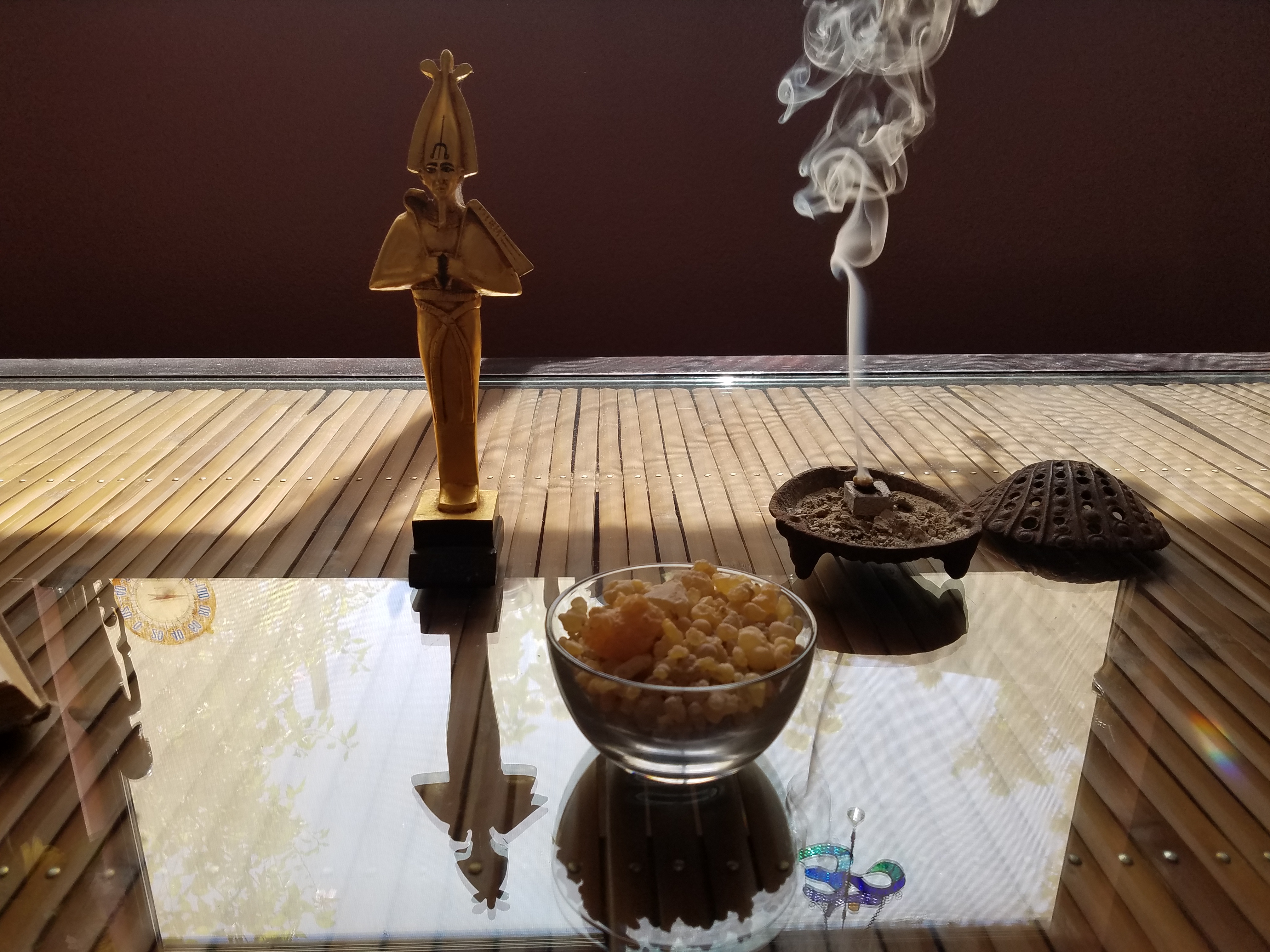
𓊸
Senetjer - Frankincense - Temple Incense
Frankincense was said to be sacred to the Egyptian god forms Osiris, Ptah and Sokar, who were all depicted as mummiform rulers of the Duat or Underworld.
Senetjer has traditionally been identified as Frankincense by Egyptologists, and is usually translated simply as “incense” - the word meaning “of the gods”. In fact, the burning of incense and anointing of fragrant oils was called Seneteri - “to make divine”.
The historian Plutarch (circa 70 BCE) tells us that Olibanum (Frankincense) was the first temple offering in the morning as the doors to the inner shrine were opened. It’s use as incense in religious ceremony stretches back from the present day into the misty depths of pre-history.
Scholars tell us that Senetjer clearly denoted Boswellia spp. resin, also called Neneb in the Old Kingdom, but also Pistachia terebinthus resin in the New Kingdom – switched intermittently for unknown reasons, perhaps due to availability or olfactory tastes. Boswellia spp. resin was also called Nenib by the Egyptians, and was known as Olibanum to the ancient Greeks. It was later named Frankincense in Western Europe after the Frankish Crusaders who revered it.
In fact, there are at least 25 known species of fragrant resin-producing Boswellia spp. trees/shrubs that occur in Africa, India and the Middle East – none of which grew in ancient Egypt. Some scholars believe that the species of incense we are offering here, B. papyrifera, with it’s clear golden color, has the longest history of use as incense in Egypt, being from nearby Eritrea to the South - the closest source.
Our premium grade Eritrian B. papyrifa , while not having the prominent sweetness of the Arabian species, has the highest level of the mood-enhancing ingredient insensol, and a more purifying scent. Because it is more sustainably grown and not as sweet, it’s price is surprisingly affordable compared to B. sacra, imported from Oman, across the Red Sea on the Arabian Peninsula, called Hedeg - “white” or Wadj - "green", due to its pale dusty-white or greenish color. B. papyrifera was the most revered in ancient Egypt due to it’s pure golden color and clarity of scent.
Frankincense has been used for millennia throughout the West much like First Nations peoples use sage, for purification and banishing, and has been clinically shown to actually have mood-enhancing and anti-bacterial properties. A great way to start your morning - Try some for yourself! Like most natural resin incense, Frankincense is burned on charcoal sitting on ash in a fireproof censer. Be sure to add some Three Kings Charcoal to your order!
Our Frankincense is sold in two tin sizes: 2 ounce and 1/8 ounce sample.
Read about Senetjer in our article Frankincense & Myrrh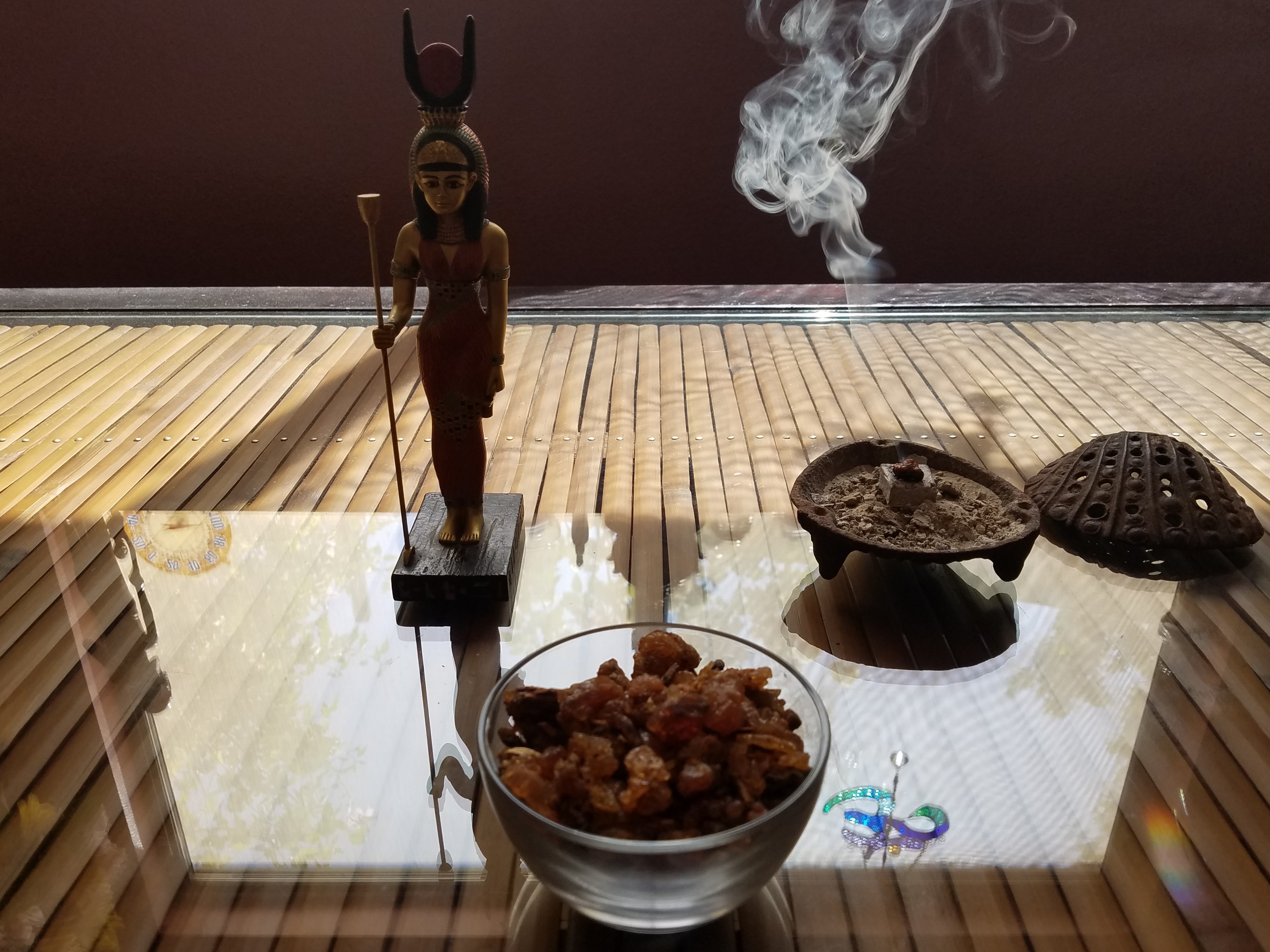
𓁥
Antiu - Myrrh - Temple Incense
A small scrubby tree from the Middle East and northeast Africa, Commophora myrrhum produces a precious reddish resin which has been traded for thousands of years. Along with gold and frankincense, it is perhaps best known in the West as a gift to the baby Jesus from the visiting Magi.
Myrrh as a burnable incense or fragrant oil was used in Egyptian temples and homes from pre-dynastic times, and has been used for centuries to inspire prayer and meditation. Myrrh was almost always associated with the Egyptian Goddesses, most especially Hathor and Isis, and was offered daily in all of the Egyptian temples.
The word Antiu denoted a burnable incense resin in the Old Kingdom inscriptions, and was attributed by Egyptologists to both Frankincense, Neneb, and Myrrh, called Khar or Khery. But by the New Kingdom era the term Antiu became used exclusively for the high-quality red Myrrh resin imported from “the land of Punt”, with the term Senetjer being used for Frankincense - most especially during the reign of Queen Hatshepsut, as depicted in her temple.
Both Antiu and Senetjer were nearly always found depicted together, sometimes bound, in the temple reliefs. While Antiu was depicted alone, both as resin and as oil, Senetjer oil was never depicted alone, only the burnable incense.
Our Myrrh is responsibly collected in Somalia, and we are are happy to say that availability has improved, so the price came down in 2024 - who knows what 2025 will bring...
Myrrh seems to have been the staple ingredient in many of the Egyptian incenses and perfumed oils. Put a little on a hot coal, and see for yourself why they call it the “Queen” of the incenses… Like most natural resin incense, Myrrh is burned on charcoal sitting on ash in a fireproof censer. Be sure to add some Three Kings Charcoal to your order!
Our Myrrh resin incense is sold in tins of two sizes: 1 ounce and 1/8 oz. sample.
Read about Antiu in our article Frankincense & Myrrh
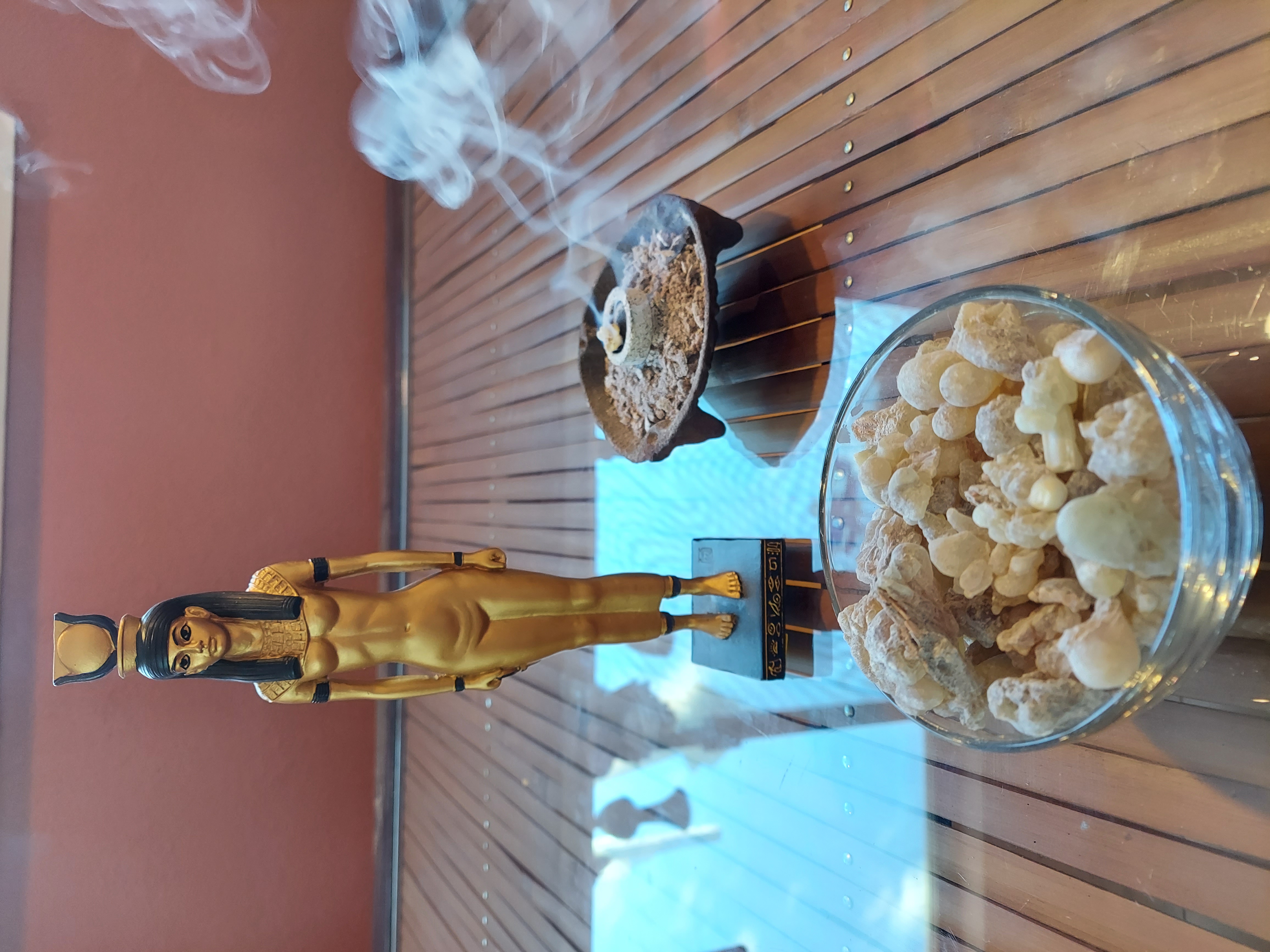
𓇆
Wahdj Senetjer - Green Hojary Frankincense - exclusive!
Wandering Stars has received an exclusive shipment from the Sultanate of Oman of the coveted Superior Green Hojary Frankincense from the Boswellia sacra tree. The botanical species name says it all, this was always the most sacred incense throughout the Mediterranean Holy Lands for several millennia! With pale white to yellow tears, it has a light greenish cast in the light, and depending, it was called Hedeg - “white” or Wahdj - “green” by the Egyptians.
We can be sure that Hathor, or any other of the green skinned Neteru for that matter, would approve of this very sweet fresh frankincense - with it’s sweet lemon and lime notes it mixes very well with Madjet or Wadjet Blue Waterlily Oils in a diffuser, and followed up with Kepu Black Temple Incense it’s intoxicating!
Get it while you can, I’m not sure how long this new source will last. Because this species is facing undue pressure and is threatened, the Sultanate of Oman is strictly controlling the harvest and limiting quantities for sale. We shall see…
Like most natural resin incense, Frankincense is burned on charcoal sitting on ash in a fireproof censer. Be sure to add some Three Kings Charcoal to your order!
Our Frankincense is sold in tins of two sizes: 1 ounce and 1/8 oz. sample.
Read about Wahdj Senetjer in our article Frankincense & Myrrh
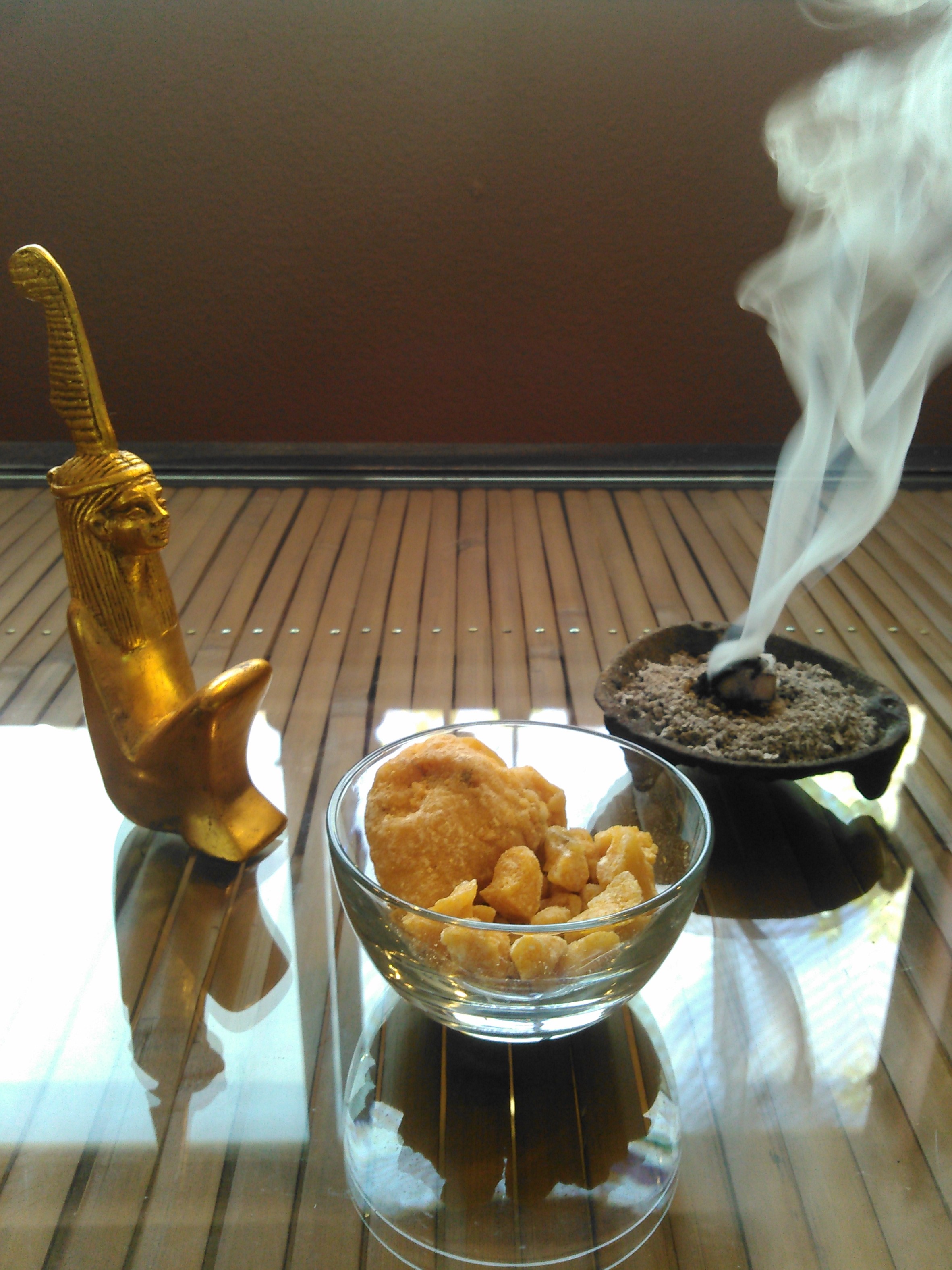
𓁧
D'da n Qedet - "Fat of the Pine Tree" - Aleppo Pine Resin
D’da n Qedet , translated as “fat of the pine tree” from temple hieroglyphs - has been identified by Egyptologists as the resin of Pinus halapensis, the Syrian or Aleppo Pine, known for it’s production of copious fat-like resin when incised, which dessicates to a beautiful golden yellow. It is one of the so-called “secret” ingredients in the production of the ancient Egyptian Kepu temple incense.
Ours is imported direct from the collector, taken from wild trees in Greece in accordance with sustainable harvesting practice. The scent is piercing and cleansing, and works well alone to open restricted airways in breathing. It also mates incredibly well with the other temple incenses Antiu, Senetjer and Kepu.
Like most natural resin incense, D'da n Qedet is burned on charcoal sitting on ash in a fireproof censer. Be sure to add some Three Kings Charcoal to your order!
Our Aleppo Pine incense is sold in tins of two sizes: 2 ounce and 1/8 ounce sample.

>>Medical Disclaimer: Our expertise lies in incense making, essential oil blends, and skin/hair ointments. Information contained on these pages is to the best of our knowledge factual and backed by clincal studies, and is presented solely for your edification and enjoyment. Wandering Stars or 'The Egyptian' Sacred Scents are not licenced healthcare providers, and cannot give medical advice. We do not recommend ingesting any of our products. <<